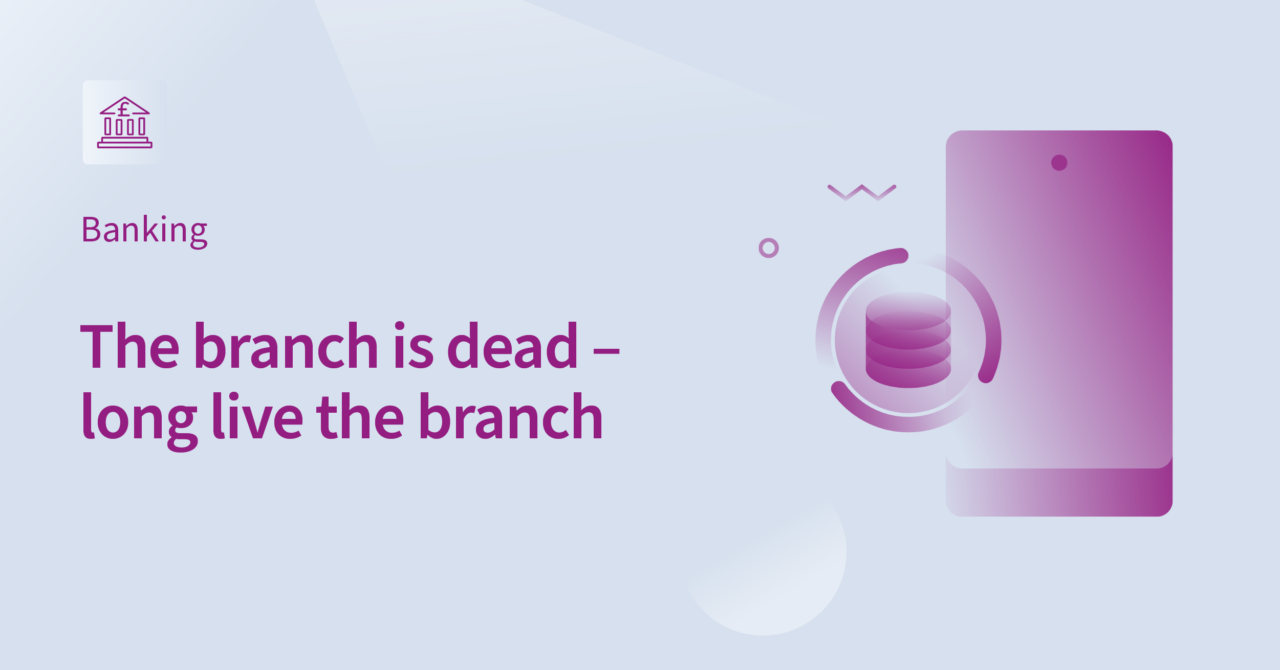The branch is dead – long live the branch

Customer experience (CX) has long been cited as a differentiator in financial services. But we’re beginning to move towards a more holistic conception of “experience” and the different touchpoints that define the customer’s relationship with the wider organisation and brand.
These experiences must respond to customers’ new, unmet and constantly changing needs, and deliver solutions rather than tools. That’s a big ask. Consumer expectations now traverse different product and service categories. Banks are competing with tech companies and even lifestyle brands that offer superlative experiences in wildly different contexts.
Forward-thinking financial services brands should be looking beyond traditional CX in order to reinvent the entire organisation around the delivery of exceptional experiences.
Death of a branch
The death of the traditional bank branch has been much publicised, but the reality is that there are still over 10,000 in the UK. The branch remains an important part of the wider customer experience for incumbents and increasingly, a differentiator in the eyes of customers who compare traditional banking names with challenger fintech brands.
For people who now do all of their banking online, branches are viewed differently to how they used to be, perhaps even through a lens of nostalgia – a social and cultural touchpoint in the physical world that was part of their past routine, like buying a pack of stamps from the local Post Office. Surprisingly, Gen Z uses branches more than you would think, just differently. For others, they are still a lifeline, not just to access their funds but a physical and social space of community and interaction.
The branch is steeped in meaning, layered and nuanced across generational, geographical, emotional and requirement boundaries. As new touchpoints come into the frame, so too will they.
Some things never change
Whilst branches remain an important part of the picture, apps and other digital touchpoints have grown in adoption and clearly, this will accelerate in the years ahead as the next generation – digitally native and active online – step into the shoes of the baby boomer generation. This has only been accelerated by the pandemic and our reliance on digital – one can only imagine the impact to society had the pandemic occurred 20 years ago instead of now.
Today for many the ‘branch’ is no longer a physical location – it’s an app, firmly embedded in the digital realm, a bank in the palm of your hand. It sounds obvious to digital natives with little experience of the drain of physicality was (queues, rain, multiple copies of documents and addresses to open an account.) This is clearly a huge change, but some things never change, and apps must continue to do what branches have always done. That is what good technology does – it recaptures the essence of the human experience and makes it relevant for today’s multi-generational needs. That is not to speak too of the need for branches to be ‘everywhere places’, connected across multiple touchpoints but offering layers of experience that differ depending on your requirements.
Bring me solutions!
“The customer is always right”, but we must be careful to resist the logic of the crowd. Banks, and indeed businesses in general, still need to know and own their markets, discerning the difference between customers’ wants and needs. Harvard Business School professor Theodore Levitt used to say that “people don’t want to buy a quarter-inch drill, they want a quarter-inch hole’ and for banks to thrive they need to do more than build clever tools – they need to provide solutions to problems.
That’s exactly what Barclays has done with its “Digital Eagles”, helping care home residents get online during lockdown. This campaign was tactical, responding to the unique challenges of lockdown for older people who are less confident using online banking). But it was also strategic, part of a long-term plan to give people essential digital skills that they can use now and in the future because with more interactions digitally the bank can access more customer data points and therefore provide more solutions and better experiences for entire customer segments they might just not have known (enough) about otherwise. It is a living testament to the idea of the bank being more, the bank needing to be more in this current landscape in order to reaffirm its position and place and relevance within society. Purpose is priceless for today’s brands. Institutions like banks are not immune from this.
Many banking brands are failing to adopt this empathetic, solution-driven approach, which is a shame and sadly inevitable, considering the widespread lack of understanding when it comes to the complexities of behavioural change, technology adoption and customer experience.
There are multiple touchpoints now which make up the framework of the branch in the eyes of the customer. The ‘branch’ is not dead but instead exists in many forms with its purpose shifting, ebbing and flowing depending upon differing customer needs and requirements.
An urgent message
The message to leaders in financial services is an urgent one – we need to go beyond CX and how the ‘branch’ (whether physical, digital or in the mindset of customers) can elevate the relationship between the customer and the brand. We can help with that.
And those who take action can create experiences that are relevant and meaningful for customers, building a bank with real purpose.